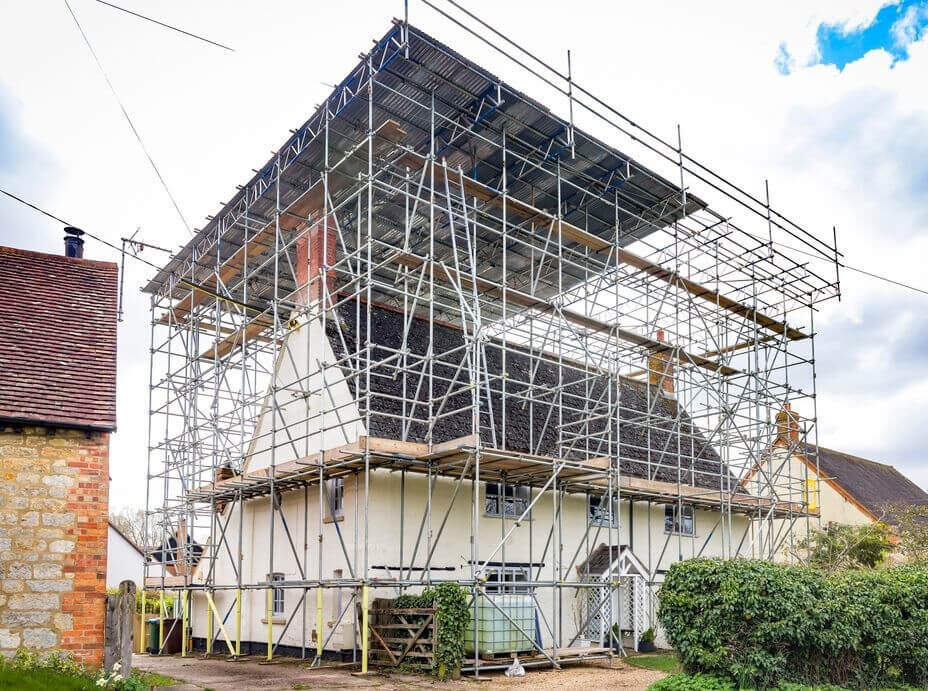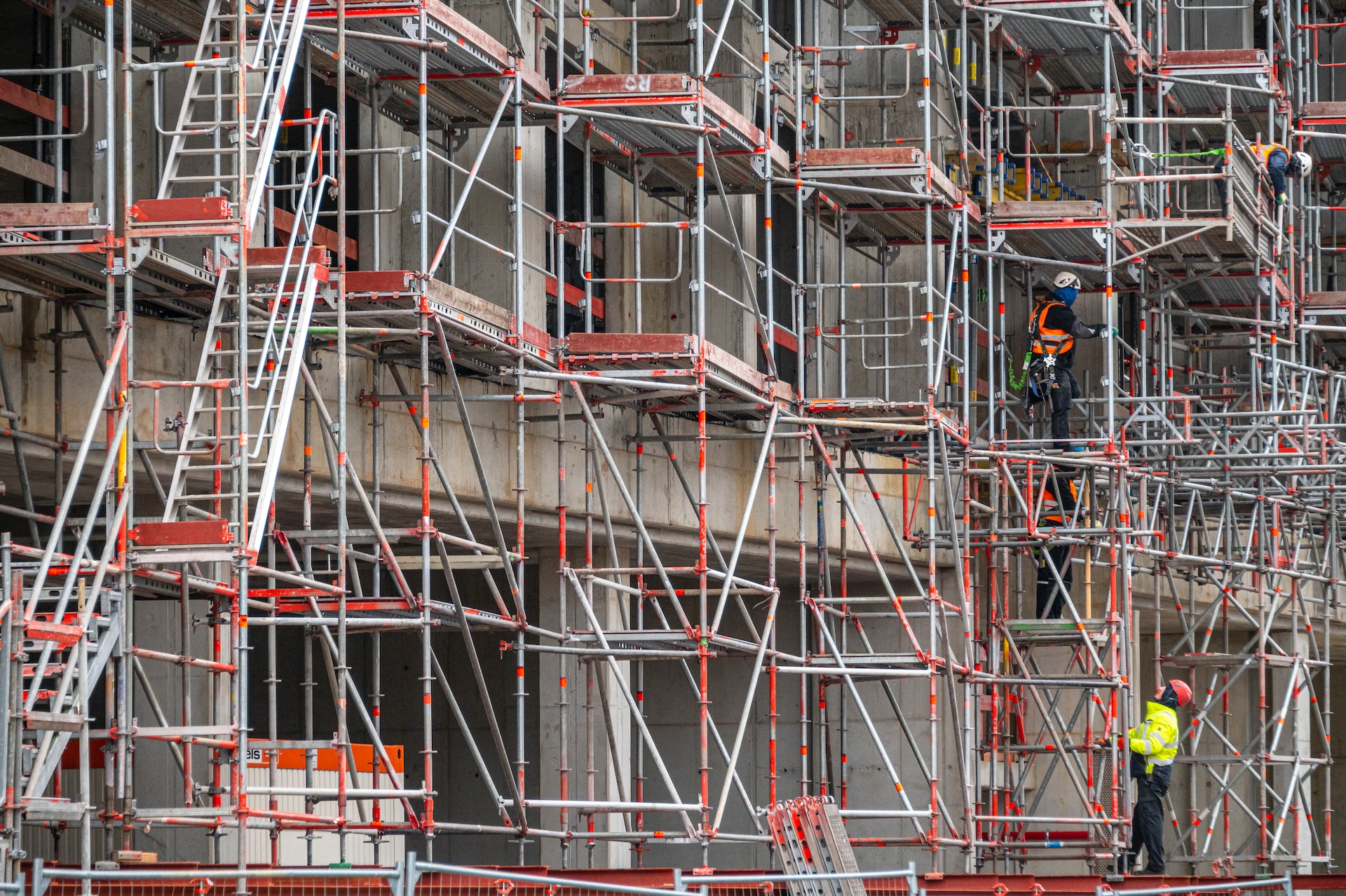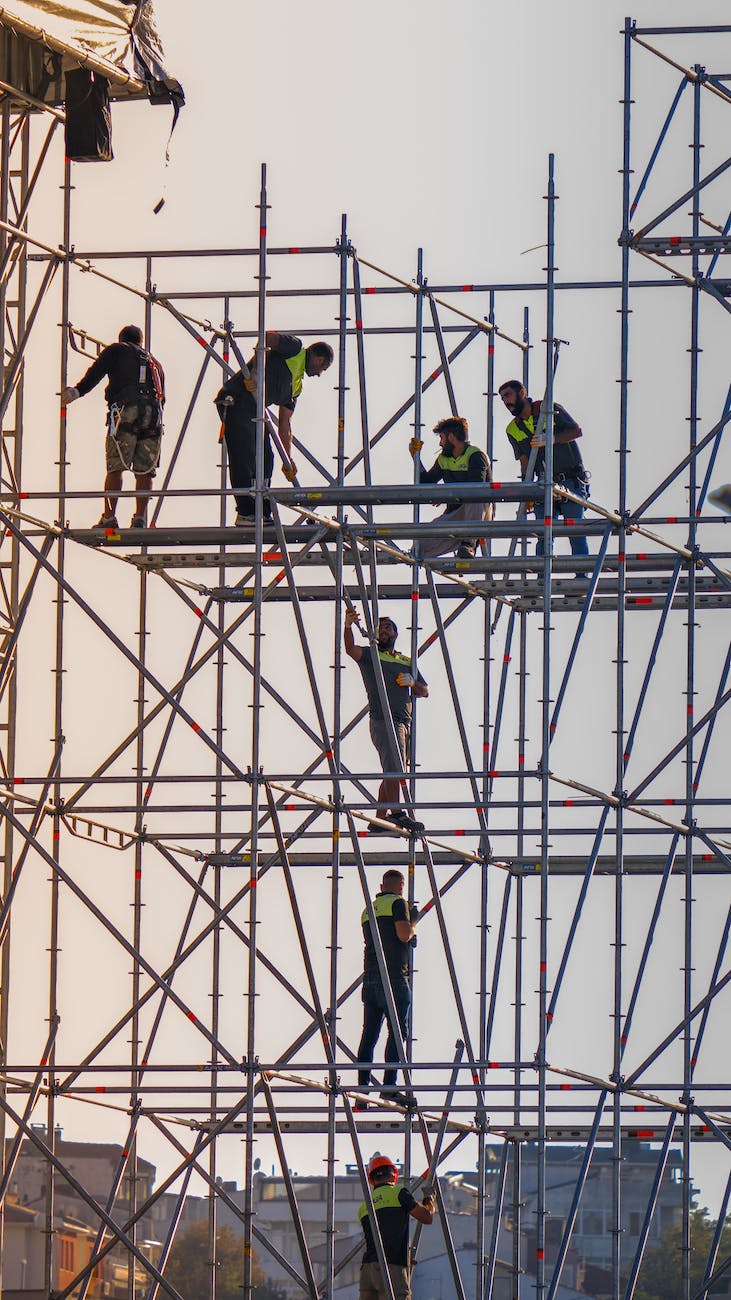Quality Scaffolding Surrey for Both Residential and Commercial Projects
Wiki Article
Discovering the Numerous Kinds Of Scaffolding Made Use Of in Building Jobs
The construction sector counts greatly on different kinds of scaffolding to meet specific task demands, each offering distinct benefits and applications. Typical framework scaffolding gives a strong structure for general jobs, while put on hold scaffolding is vital for job on high-rise frameworks.
Typical Framework Scaffolding
Standard framework scaffolding is among one of the most widely utilized methods in the building and construction industry because of its robustness and adaptability. This system consists of horizontal and vertical structures that are assembled to develop a secure system for employees and products. The primary components consist of upright posts, straight journals, and angled braces, which with each other offer a strong framework that can sustain significant lots.One of the essential benefits of conventional frame scaffolding is its versatility to numerous building projects, ranging from household buildings to large business frameworks. The modular style enables easy setting up and disassembly, making it reliable for both lasting and temporary jobs. In addition, the system can be personalized in height and width, suiting different structure layouts and site conditions.
Safety is extremely important in scaffolding applications, and traditional framework systems are outfitted with guardrails and toe boards to avoid falls and guarantee employee defense. Moreover, normal inspections and adherence to safety guidelines are important in maintaining the integrity of the scaffold. Generally, standard structure scaffolding stays a fundamental choice in the construction market, offering a reputable system for labor and boosting overall task efficiency

Suspended Scaffolding
Suspended scaffolding uses a distinct solution for building and construction tasks that call for accessibility to raised surfaces, particularly in circumstances where standard structure scaffolding may be not practical. This type of scaffolding is normally put on hold from the roof covering or upper levels of a framework, using a system of platforms, pulley-blocks, and ropes to produce a functioning room that can be gotten used to various heights.One of the key advantages of suspended scaffolding is its versatility. It can be conveniently repositioned or reduced to accommodate adjustments in building and construction demands, making it perfect for jobs such as window installment, frontage work, and maintenance on high-rise buildings. In addition, the marginal footprint of suspended scaffolding enables for better usage of ground area in metropolitan environments, where room is commonly minimal.
Security is a crucial factor to consider in using suspended scaffolding. Appropriate rigging and securing systems must be employed to guarantee security and protect against crashes. Operators should also be learnt the secure use of this tools. Generally, put on hold scaffolding provides a effective and effective remedy for accessing hard-to-reach areas in numerous construction scenarios, boosting both efficiency and safety on site.
System Scaffolding
System scaffolding, commonly considered a modern-day option in the scaffolding market, includes pre-engineered elements that can be promptly constructed and adapted for numerous building jobs. Scaffolding. This kind of scaffolding is characterized by its modular design, which enables convenience and performance on job sites, fitting structural requirements and different elevationsNormally made from high-strength steel or aluminum, system scaffolding provides enhanced toughness and stability. The elements consist of vertical articles, straight ledgers, and diagonal dental braces, which interconnect securely, guaranteeing a robust framework. The design often includes standardized installations, streamlining assembly and disassembly procedures, thereby lowering labor time and prices.

Rolling Scaffolding
Rolling scaffolding is a versatile choice to standard set scaffolding, created for movement and convenience of usage on construction websites. This kind of scaffolding includes a system supported by frameworks with wheels, permitting workers to conveniently move it as needed. The mobility attribute dramatically boosts performance, as it lessens downtime associated with putting together and dismantling repaired scaffolding.Typically built from lightweight products such as aluminum or steel, rolling scaffolding offers a strong yet portable solution for jobs needing regular repositioning - Scaffolding. It is particularly beneficial in jobs such as painting, drywall setup, and electric job, where access to numerous elevations and areas is necessary
Security is extremely important in rolling scaffolding layout, with functions such as locking wheels to stop unintentional movement when being used, and guardrails to shield employees from drops. In addition, lots of designs are flexible in height, fitting different task demands.
Cantilever Scaffolding

The design of cantilever scaffolding commonly entails making use of arms or brackets anchored to a building or framework, making it possible for the platform to prolong external safely. Safety and security is critical; therefore, these scaffolds should be engineered to hold up against ecological conditions and numerous loads. Routine assessment and maintenance are necessary to make certain structural stability and employee safety.
Cantilever scaffolding is preferred for its convenience and effective Scaffolding near me use of space, making it a popular selection in urban settings where area restrictions are common. Additionally, it helps with easier access to high elevations, eventually adding to the general performance of building and construction projects. Just like all scaffolding kinds, proper training and adherence to safety and security requirements are crucial for employees making use of cantilever scaffolding.
Final Thought
Typical framework scaffolding provides stability, while put on hold scaffolding provides versatility for elevated tasks. System scaffolding assists in fast setting up, and rolling scaffolding enhances flexibility for varying job settings.Typical frame scaffolding supplies a tough foundation for general jobs, while suspended scaffolding is necessary for work on high-rise frameworks.Rolling scaffolding is a versatile option to typical fixed scaffolding, designed for mobility and ease of usage on construction sites. As with all scaffolding kinds, appropriate training and adherence to security criteria are important for workers making use of cantilever scaffolding.
Traditional frame scaffolding provides stability, while put on hold scaffolding provides convenience for raised jobs. System scaffolding promotes fast assembly, and rolling scaffolding enhances movement for varying work atmospheres.
Report this wiki page